Key Takeaways
1. The Great Taking: A Global Collateral Confiscation is Underway
What is this book about? It is about the taking of collateral, all of it, the end game of this globally synchronous debt accumulation super cycle.
Unprecedented scope. This book reveals a long-planned, intelligent design to confiscate all collateral globally, an audacious scheme difficult for the mind to grasp. This includes all financial assets, money in banks, stocks, bonds, and the underlying property of all public corporations, as well as privately owned personal and real property financed with debt. If successful, this will represent the greatest conquest and subjugation in world history.
Hybrid warfare. We are currently experiencing a hybrid war, primarily conducted through deception, aimed at achieving war objectives with minimal overt conflict. This war targets not nation-states, but all of humanity, orchestrated by a very small, hidden group controlling central banks and key societal institutions. These "prime movers" operate opaquely, executing plans over decades, as hinted by George Soros's cryptic remark, "You don't know what they can do."
The "Great Reset." The proclaimed "Great Reset" is not driven by environmental concerns or technological revolutions, but by the inevitable collapse of the Velocity of Money (VOM), a multi-decade process. This collapse, which began in 1997, signals the exhaustion of money printing as a growth driver, making it an absolute imperative for the controlling powers to maintain their grip through the ensuing financial collapse. Their goal is to prevent discovery and prosecution, ensuring their continued control.
2. Dematerialization and Security Entitlements: The Legal Subversion of Property Rights
The greatest subjugation in world history will have been made possible by the invention of a construct; a subterfuge; a lie: the “Security Entitlement.”
Loss of property rights. For over four centuries, tradable financial instruments were recognized as personal property, but this is no longer the case. The invention of the "Security Entitlement" has fundamentally altered ownership, allowing someone else to secretly control your assets as collateral. This means that what you believe you own can be seized by secured creditors in the event of an intermediary's bankruptcy, without judicial review.
Irrefutable proof. The evidence for this subversion is absolutely irrefutable and wired to go now. Essentially all securities held by the public in custodial accounts, pension plans, and investment funds are encumbered as collateral for the massive derivatives complex. This illusion of collateral backing is maintained through a daisy chain of hypothecation and rehypothecation, where the same client collateral is reused multiple times.
Key facts of subversion:
- Ownership of securities is replaced by a "security entitlement," a weak contractual claim.
- All securities are held in un-segregated, pooled form, regardless of collateral use.
- Account holders receive only a pro-rata share of residual assets in insolvency.
- "Re-vindication" (taking back one's own securities) is absolutely prohibited.
- Account providers can legally borrow pooled securities for proprietary trading.
- "Safe Harbor" grants secured creditors priority claim over account holders.
- Courts have upheld the absolute priority claim of secured creditors to pooled client securities.
3. Global Harmonization: Standardizing the Framework for Asset Seizure
Deliberate efforts were sustained, globally, over many years. People were paid to do this, to betray the vital interests of their own people.
An engineered imperative. A global imperative has been created to grant certain secured creditors legally certain claims to client assets worldwide, ensuring near-instantaneous cross-border mobility of collateral. This "harmonization" effort, which began over two decades ago after the dot-com bust, was justified by financial instability and the threat of "collateral shortages."
The Hague Convention. The "Hague Convention on the Law Applicable to Certain Rights in Respect of Securities Held with an Intermediary" (2002-2006) introduced the "Place of the Relevant Intermediary Approach" (PRIMA). This rule was designed to circumvent national laws that protected owners' property rights, by allowing the law of the intermediary's jurisdiction to govern. Key figures involved in drafting this, like James S. Rogers, also drafted the UCC Article 8 revisions in the U.S.
European implementation. Despite the EU not signing the Hague Convention due to conflicting legal principles like lex rei sitae, the objective of legal certainty for creditors was pursued through other means. Directive 2002/47/EC and later the Central Securities Depository Regulation (CSDR) in 2014, facilitated the linking of national CSDs to International CSDs (ICSDs) like Euroclear. This enabled the transfer of legal title and use of customer collateral across borders, effectively adopting the U.S. model of pooled, fungible securities.
4. Collateral Management Systems: Automated Sweeping of All Securities
As we will see, the objective is to utilize all securities as collateral, and hence to have the real practical means to take all securities as collateral.
Artificial demand. The enormous undertaking of comprehensive "collateral management" systems is not driven by genuine market demand but by regulatory contrivance. Reports from the Bank for International Settlements (BIS) confirm that there was no evidence of collateral scarcity, yet "demand for collateral assets" was artificially created and intensified by regulatory fiat to move control of collateral to the largest secured creditors behind the derivatives complex.
Global platforms. The goal of these systems is to achieve a "single view of all available securities, regardless of where they are held, in real time." Major custodians are implementing global platforms or connected systems to aggregate supply information, a prerequisite for efficiently deploying securities to meet collateral obligations. ICSDs, through links with local CSDs, can access and manage a participant's entire securities holdings for collateral purposes.
Collateral transformation and sweeping. "Collateral transformation" involves encumbering any and all client assets under swap contracts, channeling them into the derivatives complex without client knowledge or benefit. These systems are designed for automated, market-wide sweeping of collateral to Central Clearing Parties (CCPs) and central banks during market stress. In the inevitable "Everything Crash," these systems will automatically seize all collateral, ensuring the "collateral taker" receives assets "free-of-payment."
5. Safe Harbor Provisions: Protecting Creditors, Not Depositors
So now, with the new “safe harbor” provisions, the transfer of customer assets to creditors previously considered to be fraudulent can no longer be challenged.
Bankruptcy code amendments. In 2005, just before the Global Financial Crisis, "safe harbor" provisions in the U.S. Bankruptcy Code were significantly altered. These changes ensured that secured creditors could seize client assets without subsequent challenge, effectively providing "safe harbor" for creditors against customer claims to their own assets. Transfers previously considered "constructively fraudulent" or "preference transfers" are now protected.
Protected class. The safe harbors cover a wide range of derivative contracts, including securities, commodities, forward, repurchase, and swap agreements, which act as a "catch-all" for the entire derivatives market. Only "financial participants"—essentially very large financial institutions—are always protected under these provisions. This creates a privileged class of creditors with absolute priority claims.
Lehman Brothers precedent. The bankruptcy of Lehman Brothers cemented this new safe harbor regime into case law. JPMorgan, acting as a secured creditor and custodian, seized client assets in the lead-up to Lehman's failure. Despite being sued by clients, the court ruled in favor of JPMC, stating that these "systemically significant transactions between sophisticated financial players" were precisely what the safe harbors were intended to protect, confirming JPMC's status as a "member of the protected class."
6. Central Clearing Parties (CCPs): Designed to Fail and Consolidate Assets
The CCPs are designed to fail. They are deliberately under-capitalized. The start-up of a new CCP is planned and pre-funded.
Concentration of risk. Central Clearing Parties (CCPs) assume counterparty risk for transactions, including derivatives, and provide clearing and settlement services. Regulators have pushed for more capital, collateral, and clearing, yet risks have become heavily concentrated within these institutions. Euroclear's own discussions acknowledge the possibility of CCP failures, with the EU insisting that taxpayers will not pay in such a "resolution."
Deliberate undercapitalization. The Depository Trust & Clearing Corporation (DTCC), which operates two systemically important CCPs in the U.S., has a consolidated total shareholder's equity of just over $3.5 billion as of March 2023. This meager capitalization underpins the entire U.S. securities market and derivatives complex, a stark contrast to DTCC's claim of being "sufficiently capitalized." This deliberate undercapitalization is a key deception.
Planned failure and asset transfer. The Federal Reserve's lawyers confirmed that in a clearing corporation's insolvency, its creditors' claims have priority over entitlement holders. DTCC's own recovery and wind-down plans involve transferring services to a new, pre-funded CCP in the event of a failure. This construct ensures that when the undercapitalized CCPs inevitably collapse, the "protected class" of secured creditors will take all collateral, with the rule of law prevailing in their favor.
7. The 1933 Bank Holiday: A Precedent for Systemic Confiscation
People with money in banks that were not allowed to reopen lost all of it. Their debts were not canceled, however; these were taken over by the banks selected by the Federal Reserve System.
Engineered panic. In 1933, President Roosevelt declared a bank holiday, closing all banks by executive order. Only Federal Reserve Banks and those selected by the Fed were allowed to reopen. This event, often portrayed as a brilliant recovery scheme, was in fact a deliberate act to consolidate power and assets. The Federal Reserve had the means to prevent bank failures all along but chose not to intervene, allowing panic to spread before implementing its "solution."
Gold confiscation. The Emergency Banking Act of 1933, passed hastily, enabled the Fed to supply "unlimited amounts of currency" to selected banks. Simultaneously, Executive Order 6102, issued under the Trading with the Enemy Act of 1917, confiscated all gold owned by the public. The rationale was to remove the gold backing constraint on the Fed's money supply, but the real purpose was to criminalize gold ownership and seize a vital asset, ensuring no pockets of resilience remained.
Modern parallels. The 1933 events serve as a blueprint for the current "Great Taking." Just as gold was targeted then, all securities globally are now set up as collateral for the derivatives complex. The Fed has also allowed major banks to move trillions in derivatives into their FDIC-insured deposit-taking subsidiaries, tested on a large scale. This strategy ensures that in a future crisis, these deposit-taking entities can be separately bankrupted, allowing for comprehensive seizure of deposits and assets, leaving no one protected.
8. The Great Deflation: Debt as a Weapon of Dispossession
When the “Everything Bubble” is imploded, we will face a deflationary depression, which will span many years, even decades.
Historical deflation. Historical data from the 1930s shows that all commodities, except gold, bottomed at sixty-year lows, and most public companies went bankrupt, their assets seized by secured creditors. Real estate prices in Manhattan, for example, fell by 74% and remained depressed for decades. This prolonged deflation, despite massive demand drivers like electrification and post-war reconstruction, demonstrates the power of this economic force.
The "Everything Bubble." The Federal Reserve created the current "Everything Bubble" by keeping interest rates near zero for 15 years, ostensibly to fight the Global Financial Crisis (which the Fed also created). This inflated asset prices across all financial and real estate markets. Now, the Fed is sharply increasing rates into economic weakness and a banking crisis, mirroring its actions during the Great Depression. This ensures a massive, inevitable decline in global financial and real estate markets.
Debt as conquest. The coming "Great Deflation" is intrinsic to the "Great Taking." With prolonged deflation, debt becomes an inescapable trap, as people cannot make payments or repay their obligations. All property and businesses financed with debt will be taken. The architects of this plan have deliberately encouraged deep indebtedness, knowing that debt, an artificial construct, is a powerful weapon for dispossessing individuals of their real assets. No debt forgiveness, like ancient debt jubilees, is intended.
9. Central Bank Digital Currencies (CBDCs): The Ultimate Tool for Control
The key difference with the CBDC is the central bank will have absolute control on the rules and regulations that will determine the use of that expression of central bank liability, and also we will have the technology to enforce that.
Global push for CBDCs. The Atlantic Council, a military strategy think tank, is actively tracking the global development of Central Bank Digital Currencies (CBDCs). Currently, central banks in 114 countries, representing 95% of the global economy, are working on CBDCs, with G7 and G20 nations in advanced stages. This widespread, urgent push is not about "financial inclusion" but about establishing a new, absolute control system.
Absolute control. Augustin Carstens, General Manager of the Bank for International Settlements (BIS), openly stated that CBDCs grant central banks "absolute control on the rules and regulations that will determine the use of that expression of central bank liability," along with the technology to enforce it. This means unprecedented surveillance and control over every transaction, dictating what, where, and when individuals can spend their money.
Post-collapse control. In the event of a global collapse of the banking, money, and payments systems, CBDCs will be introduced as the new form of money. People, having lost everything, will be issued smartphones and required to download an app, agreeing to terms that will lead to increasing indebtedness and strict behavioral controls. This system ensures compliance, as access to basic necessities will depend on adherence to the central bank's rules, eliminating any pockets of resistance.
10. The Invisible Government: A Call to Awaken and Resist
Those who manipulate this unseen mechanism of society constitute an invisible government which is the true ruling power of our country.
The unseen manipulators. Edward L. Bernays, a pioneer of propaganda, revealed in 1928 that an "invisible government" manipulates society's unseen mechanisms, holding the true ruling power. This systematic psychological manipulation has escalated into continuous, full-spectrum psychological operations, creating a public unable to distinguish truth from fiction. This deliberate obfuscation serves to maintain the power structures controlled by those who profit from illusions.
Criminal intent. The individuals behind these schemes are not benevolent elites but "lying, thieving killers" who have deliberately caused immense suffering and death through decades of planning and action. Their criminality has reached an unprecedented scale, aiming for global subjugation. They are bound by a "criminal pact" of shared guilt, using heinous acts as a power totem, and operating through the anonymity of vast social organizations.
The path to resistance. This escalating hybrid war, characterized by overt media control, censorship, physical control measures, and despotic governments, is a sign not of increasing power, but of its collapse. Their power relies on deception, and as their control systems (money and media) fail, they resort to energy-intensive physical control, risking exposure. Humanity must recognize this existential threat and dismantle their power structure non-violently. By documenting their actions and putting functionaries on notice, their allegiances can be destabilized, leading to their inevitable discovery and the end of their grasping control.
Last updated:
Review Summary
The Great Taking receives mostly positive reviews, with readers praising its eye-opening insights into the global financial system. Many find Webb's arguments well-documented and convincing, albeit disturbing. The book explores how central banks and financial institutions may be orchestrating a massive wealth transfer. Some readers appreciate the clear explanations of complex financial concepts, while others find parts technical or dry. Critics argue it's fear-mongering or conspiracy theory. Overall, readers recommend it as an important, thought-provoking read, despite its alarming conclusions.
Similar Books

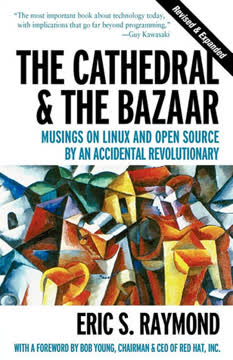
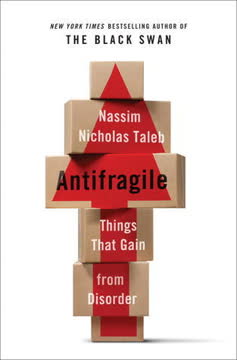
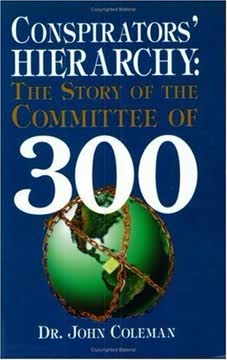

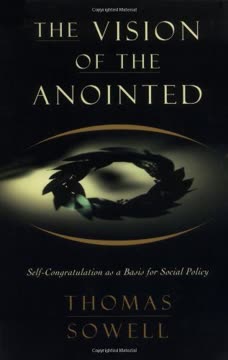
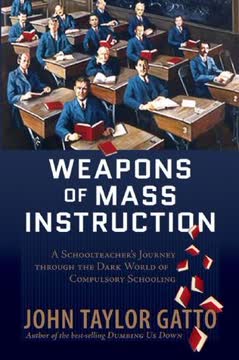
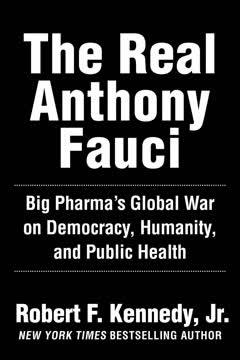
Download PDF
Download EPUB
.epub digital book format is ideal for reading ebooks on phones, tablets, and e-readers.





